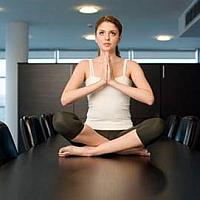What is Morning Sickness
Morning sickness may not be a critical condition but it is certainly a nagging problem for pregnant ladies. It causes nausea which is often mild, but may sometimes cause actual vomiting. In more severe cases, the vomiting may lead to dehydration and related conditions. Most often, nausea occurs in the morning hours and gradually reduces with the day, hence the name morning sickness.
Morning sickness is believed to be a mechanism of the immune system that protects the fetus against toxins. Nonetheless, it does cause a nagging unease to pregnant lady. More than half of all pregnant lady, and sometimes other women also, for example, those who use hormonal contraception, suffer from it.
How to Counteract Morning Sickness
If you are also suffering from morning sickness or similar symptoms, you need not despair. There are several effective home remedies that can help you get rid of it.
The first requirement is to examine your diet. A balanced diet is a key to counteracting morning sickness. Your daily diet should include whole grains and brown bread, and it should be rich in carbohydrates and proteins. These foods will provide you with enough energy the whole day, apart from reducing the tendency for morning sickness. Have your meals in small and frequent servings throughout the day, rather than having large meals only two or three times a day. If you are going out, take home cooked food with you. Eating out can worsen symptoms of morning sickness.
Secondly, if you are a pregnant lady, you should never sleep on an empty stomach. You must have a protein rich diet before you go to bed. It would be a good idea to keep some snacks at your bedside in case you wake up hungry in the middle of the night. Apart from ensuring proper nutrition, this will go a long way in reducing the tendency to get morning sickness. However, avoid junk foods or snacks high in fats.
Vitamin B and Calcium are essential during pregnancy. That’s why it is important to have lots of milk. You can add some wheat germ to your glass of milk to counteract morning sickness.
To reduce the tendency to get morning sickness, it is important to keep your body temperature under control. You can ensure this by taking plenty of water and other fluids, like fresh fruit juices. However, avoid foods and juices that give you acidity. Also, avoid perfumes with a strong fragrance as these can aggravate morning sickness symptoms.
Home Remedies for Morning Sickness
Lemon is one the best home remedies for morning sickness. Keep some sliced lemons, or fresh lemon juice, at your bedside and have it whenever you feel like. You can also sprinkle some salt and black pepper powder on the lemon slices, or add them to the lemon juice. Apart from providing an irresistible taste, it will increase the effectiveness of lemon juice. Even smelling fresh lemon peels can reduce or alleviate morning sickness symptoms.
Among other great home remedies for morning sickness is vinegar. Prepare a mixture of vinegar with an equal amount of honey in a cup and have it every night before going to bed.
Curry leaves are also great home remedies for morning sickness. Mix some curry leaves juice with lemon juice and add a teaspoon of honey to it. Have this mixture three or four times daily for quick relief from morning sickness symptoms.
Ginger is one of the most wonderful home remedies for morning sickness. Grate a medium sized piece of ginger and boil it in sufficient quantity of water until the water is reduced to half. Let it cool, add some honey for taste, and have it daily in the morning. Sucking a few small pieces of ginger can also give quick relief in nausea. However, if ginger is too difficult to take for you, because of its strong taste, you can try spearmint tea, peppermint tea or raspberry tea. These are time-tested home remedies for morning sickness.
Oranges occupy an important place among the home remedies for morning sickness. Savour two-three oranges daily during pregnancy. Apart from curing morning sickness, it will also provide you with lots of vitamin C.
Bael fruit enjoys the pride of place among home remedies for morning sickness. Add 2 to 4 tablespoons of bael juice to cooked rice and have it two-three times daily. In addition to curing morning sickness, it will work wonders for your digestion and prevent constipation which may be a nagging problem in pregnancy.
Peppermint oil is another great home remedy for morning sickness. Add some drops to boiled and cooled water and keep it handy with you. Drinking some of it in the morning will keep morning sickness at bay. However, if the problem is severe, you should use these home remedies under the supervision of your doctor or health care provider only.
Lifestyle Changes to Counteract Morning Sickness
There are several other measures you can take to reduce your tendency to get morning sickness. Keep your room clean, well ventilated and well arranged. Get sufficient sunlight and avoid staying at dark places for long. If possible, go for a morning walk; having fresh morning air can help alleviate the symptoms of morning sickness. Yoga, meditation, and light exercise are also helpful, but during pregnancy, these should be done strictly under the supervision of an expert, or not at all. Wear loose clothes for maximum comfort and avoid working for long hours during pregnancy. If work is necessary, take frequent short breaks or naps in between.
The problem of morning sickness differs in intensity from one woman to another. Choose the remedy that suits you best and follow the diet regimen and other lifestyle measures suggested above. By following these simple steps you can easily rid of your morning sickness symptoms.

 Memory goes beyond merely retaining information and recalling it when the need arises. It is a dynamic faculty of the mind that actively analyzes the assimilated information and processes it to be used by us and our body, consciously or unconsciously. For example, out of the vast mass of information we come across daily in our lives, it sieves out the irrelevant part and retains only that part which is, or may be, useful to us. That’s why a good memory is said to be the key to a healthy and wealthy life.
Memory goes beyond merely retaining information and recalling it when the need arises. It is a dynamic faculty of the mind that actively analyzes the assimilated information and processes it to be used by us and our body, consciously or unconsciously. For example, out of the vast mass of information we come across daily in our lives, it sieves out the irrelevant part and retains only that part which is, or may be, useful to us. That’s why a good memory is said to be the key to a healthy and wealthy life. Work, as the saying goes, is worship. We all need to work not just to survive and support our families, but also to carry out our larger responsibilities towards the society. However, the nature of work today has made it an enemy to our health. Most of us spend hours locked up in offices, scanning files or keeping glued to computer screens. This puts not only our eyes but also neck, shoulder and back muscles to unwarranted stress, leading to gradual stiffness in them. This, along with hundred other stresses and tensions at work, may lead to headaches, backaches, neck pain, shoulder pain, mental fatigue and irritation. If left unattended, these myriad problems may adversely affect your efficiency at work, thus forming a vicious circle that may well make your life a hell.
Work, as the saying goes, is worship. We all need to work not just to survive and support our families, but also to carry out our larger responsibilities towards the society. However, the nature of work today has made it an enemy to our health. Most of us spend hours locked up in offices, scanning files or keeping glued to computer screens. This puts not only our eyes but also neck, shoulder and back muscles to unwarranted stress, leading to gradual stiffness in them. This, along with hundred other stresses and tensions at work, may lead to headaches, backaches, neck pain, shoulder pain, mental fatigue and irritation. If left unattended, these myriad problems may adversely affect your efficiency at work, thus forming a vicious circle that may well make your life a hell.



